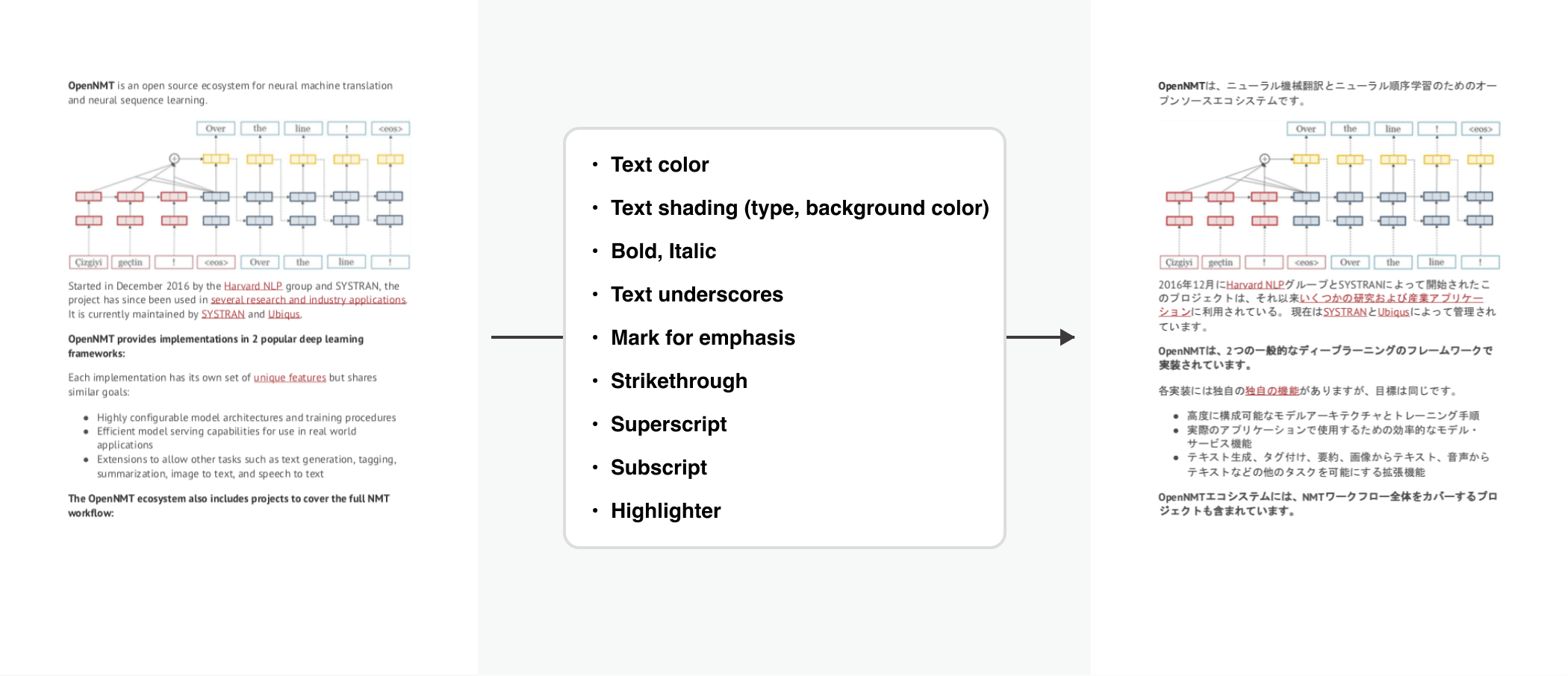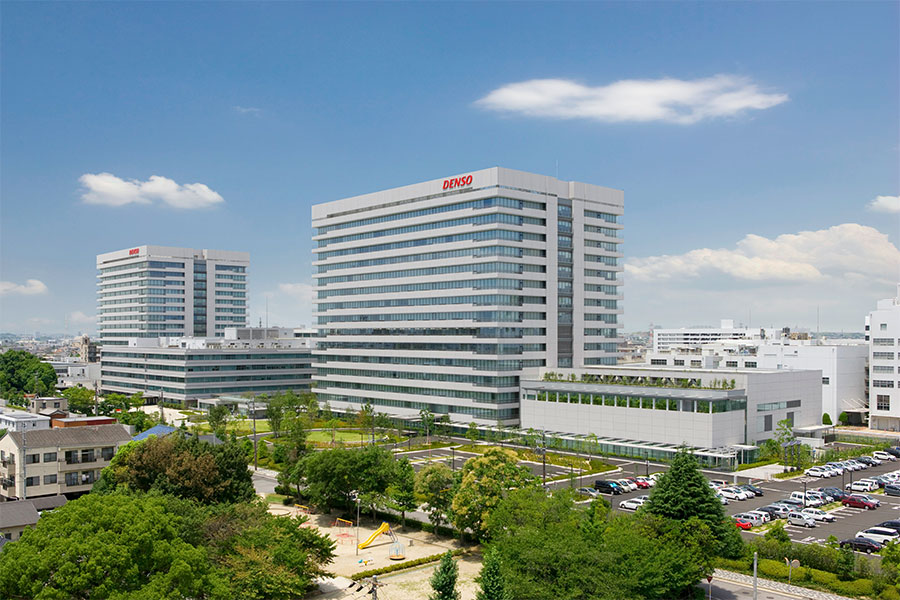Case study of AI automated translation at Denso The number of users is more than double the initial forecast. Reasons why it is used for the translation of technical journals and by overseas staff
Denso is the world's second largest automotive parts manufacturer, with 57% of its sales overseas and operations in 35 countries and regions. Since 2018, the company has been implementing 'Mirai Translator®' company-wide. In this article, we asked Mr. Hidenao Shiraki of the IT Infrastructure Promotion Department, Mr. Shogo Idekoba of the Business Infrastructure Development Section, Data Utilization Promotion Office, IT Digital Division, and Mr. Hiroshi Ikebe of the Material and Education Development Office, Customer Service Engineering Department of Denso Corporation about the background and the sense of use in the field.
Denso Corporation
A global automotive parts manufacturer that provides advanced automotive technology, systems, and products. Under the slogan of 'Bringing hope for the future for our planet, society and all people,' the company focuses on "electrification," "advanced safety and automated driving," and "connected." In addition to providing the value of new mobility, as "non-automotive businesses," they are working on FA (factory automation) and agricultural industrialization to contribute to the productivity improvement of society and industry.
Mr. Hidenao Shiraki, Office Tools Reform Office, IT Infrastructure Promotion Department
Mr. Shogo Idekoba, Business Infrastructure Development Section, Data Utilization Promotion Office, IT Digital Division *Transferred to the current department in January 2020.
Mr. Hiroshi Ikebe, Material and Education Development Office, Customer Service Engineering Department
Challenge: Translation accuracy and cost within security requirements

Left: Mr. Shiraki; Middle: Mr. Idekoba; Right: Mr. Ikebe
— What kind of work do you two do?
Shiraki: The Office Tools Reform Office, to which I belong, is responsible for the planning and conception in the area of OA of the global Denso. I am responsible for researching, benchmarking, planning, deploying, and operating new IT tools, and the best thing I can do is make my customers happy.
Ikebe: The Material and Education Development Office, to which I belong, prepares product manuals and repair manuals for Denso automotive products. One of my responsibilities is to edit the Denso technical journal ‘Denso Technical Review’ which provides an overview of the new Denso products for the Denso network and stakeholders.
— What are your translation issues? What kind of problems did you have before the implementation in the first place?
Shiraki: Currently, Denso operates in 35 countries and regions around the world and employs over 170,000 people. In order to promote business in such an environment, it is essential to overcome language barriers. There was a translation tool that had been introduced throughout the company. At the time, however, the translation accuracy was low, and those that needed accuracy were ordered to outside contractors, and other tools were introduced separately for each division and department.
— Under such circumstances, why did you consider introducing a new tool?
Idekoba: The main factor was cost. The cost of translation tools that had been separately introduced by each department and translation costs were high, so we were asked if we could reduce costs by, for example, concluding a comprehensive contract by the information department. Mirai Translator® was one of those candidates.
— Why did you choose Mirai Translator® among the various tools available?
Shiraki: The first point was that we could improve translation accuracy, which had been a challenge for existing tools. Previous tools focused on on-premises solutions for information security, creating accuracy challenges. On the other hand, Mirai Translator® was the latest AI translation cloud service. Moreover, in terms of security, there is no secondary use of translation data, so we can use it with peace of mind.
The second point was that it could reduce the detailed burden on business. For example, it can translate files in PDF format and adjust the layout. The final point was that we could achieve the original goal of reducing costs associated with a comprehensive contract. Based on these considerations, we decided to implement Mirai Translator®.

In file translations, text format and layout can be maintained.
Impressions after launch: Very useful for translating technical journals. Used not only by Japanese staff but also by overseas staff
— What kind of impact did you have on your business after actually implementing it?
Ikebe: In my work, I translate ‘Denso Technical Review’ created in Japanese and deploy it to the Denso’s overseas network. Up until about a year ago, we had asked an external translation company ,and the staff members had checked the translation. But after that, the policy changed, and recently we have been doing all the translations within the company.
Since we introduced Mirai Translator®, we have not only had no “waiting time” to ask translation companies, but we have also seen a significant improvement in our own translation speed. I especially like the function of “reverse translation.” Once the translation was done in English, it was re-translated into Japanese to check if there was anything wrong, and the process of adjustment was repeated, so that the translation could be done faster and with higher accuracy than simply checking translations. Also, if you use this process, you will be able to notice “funny expressions” in Japanese. For example, if the connection of the subject and predicate is wrong, the translation will be strange.
Shiraki: In the past, there were only text translations, so many employees find file translations very useful. At overseas bases, local staff also use the system to “read documents by translating Japanese into English.” This usage was unexpected for us. It seems that using Mirai Translate to translate Japanese at hand is more accurate than using English emails sent by Japanese staff unfamiliar to English. In addition, since the implementation cost is lower than that of individual divisions, the number of registered users has more than doubled from the initial estimate due to increased use by group companies.
Future prospects: Beyond the language barrier, taking on the next challenge

— Is there any part that you would like to use your time because the translation work has been streamlined?
Ikebe: I would like to promote my work while keeping the entire team in mind, not just my own work.
Idekoba: I want to quickly develop new businesses that transcend language barriers, whether in Japan or abroad.
— Do you have any points you can recommend to those who are considering the implementation of Mirai Translator®?
Idekoba: It’s simple and intuitive. It is convenient that a large amount of translation can be done in batch processing. As mentioned earlier, the translation is highly accurate and very skillful.
Cloud-based enterprise AI automated translation Mirai Translator®






